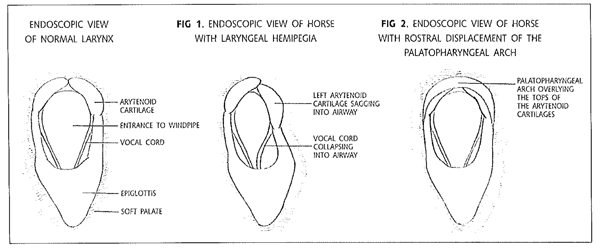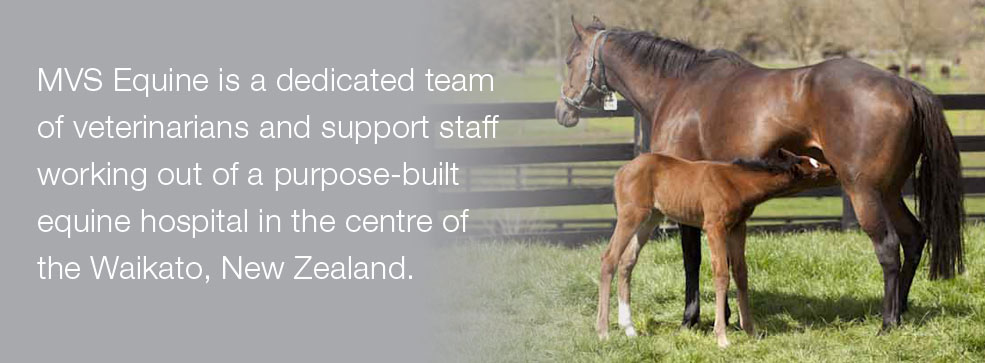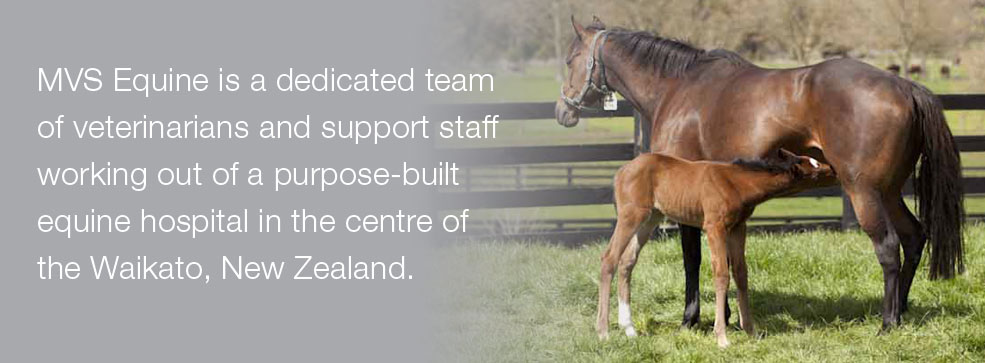Scoping Explained
Scoping Explained
May 28, 2012
Dr Andrea Ritmeester BVSc MS Dip l ACVS
Registered Specialist – Equine Surgery
Post-sales scoping has become a key buyer safety clause in recent yeas. But what’s involved? What are the vets checking for? And what treatment is available if an issue is diagnosed?
Since 1995, post-sale endoscopic examinations of the upper respiratory tract of horses by approved veterinarians have been offered at the Karaka yearling sales. Every buyer should consider using the service, as an endoscopic examination can pick up a number of conditions that could void the sales agreement.
Horses are examined endoscopically – that is using a flexible camera which is put up a horse’s nose and into the back of their throat – in their boxes immediately after the sale. If issues are identified, the horses are examined video-endoscopically, and a panel of veterinarians decides if the horse passes or fails the conditions of sale.
Conditions that void the sales agreement:
1. Laryngeal hemiplegia
Sometimes called roaring, laryngeal hemiplegia is a condition where one side of the throat is paralysed so that the muscles cannot hold the larynx open during inspiration.
During strenuous exercise the paralysed cartilage obstructs the entrance to the windpipe, significantly reducing athletic ability. It occurs most commonly in large, young male horses. Veterinarians use a 1-5 grading scale and any horse graded 4 or 5 will fail the conditions of sale.
2. Rostral displacement of the palato-pharyngeal arch
A rare congenital throat malformation, the hallmark of this condition is a fold of tissue that normally lies just behind the top of the arytenoid cartilages, sliding forwards and covering them.
When this is present, there are usually other laryngeal developmental abnormalities, typically resulting in abnormal respiratory noise and exercise intolerance.
There is no effective treatment, and affected horses are generally ineffective as athletes.
3. Epiglottic entrapment
This relatively common condition sees a fold of membrane envelope the epiglottis, impeding its function.
It is often associated with a sudden loss of racing form and abnormal respiratory noise at exercise. Treatment consists of surgically dividing the entrapping membrane, and carries a good prognosis for a full return to athletic function.
4. Persistent dorsal displacement of the soft palate
When the soft palate moves from its normal position below the epiglottis to sitting on top of it, it partially obstructs the entrance of the windpipe, interfering with the airflow and causing horses to ‘gurgle’ during fast exercise.
The cause is often unknown, but it can be associated with physical abnormalities such as cleft soft palate or an abnormally small or flaccid epiglottis.
5. Arytenoid chondritis or chondroma
Often caused by direct trauma from swallowed or inhaled objects, this condition refers to the enlargement of one or both arytenoid cartilages due to inflammation and/or infection.
Affected animals usually display increase respiratory noise with exercise, and as the disease progresses they can have difficulty breathing even at rest.
If discovered early the condition may respond to medical therapy, but if surgery is required the prognosis for a return to full athletic function becomes guarded.
6. Sub-epiglottic cyst(s)
These round, thin-walled, fluid-filled structures develop beneath the epiglottis and can be large enough to displace the soft palate upwards.
Typically resulting in airway obstruction and abnormal respiratory noise with exercise, they may interfere with swallowing, resulting in chronic coughing and choking.
Treatment consists of complete surgical removal of the cyst and carries a good prognosis for a full return to athletic function.







